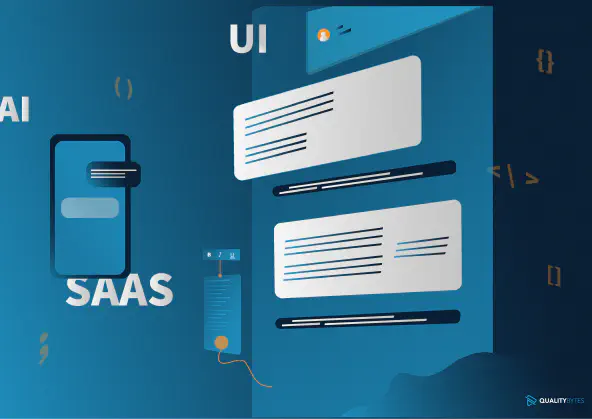Why Your Windows-Based Business Software Is Under Pressure – And What You Can Do About It


Many software companies started building custom industry solutions 10, 15, or even 20 years ago—and in doing so, they helped digitize entire markets.
While others were still debating how to organize paper files in red, yellow, or blue folders, these pioneers were already launching powerful applications using Rapid Application Development (RAD) tools like Classic ASP, VB6, WinForms, WPF, or ASP.NET WebForms. These systems were often years ahead of their time.
But what was once a competitive edge has now become a growing liability. That same software is under increasing pressure—technically, financially, and organizationally.
In this article, we explore the root causes behind that pressure—and what CEOs, CTOs, and software team leads can do now to address it strategically.
Inhalt:
Technologies like Visual Basic, WinForms, WebForms, and Classic ASP once gave your business a clear speed and market advantage. But many of these platforms haven’t been actively maintained in years—or even decades.
This isn’t just a security concern. It also makes it incredibly difficult to meet modern customer expectations, especially when they’re used to features and experiences from newer, cloud-native solutions.
In practice, this leads to challenges like:
Bottom line: Your software is no longer future-ready—and you feel it with every new requirement.
Back in the late ’90s and early 2000s, speed was everything in the Microsoft developer community. Tools like Visual Basic 5 and 6—and later early .NET frameworks like WinForms and WebForms—were promoted as Rapid Application Development (RAD) platforms.
Their simplicity allowed even non-traditional developers to build impressive customer solutions at record pace. Many of these systems grew over time into large, business-critical products. But clean architecture and long-term maintainability often took a back seat.
Today, the shortcuts taken back then are starting to show their cost. Adding new features takes significantly more time, money, and coordination than it should—and even basic planning has become increasingly unpredictable.
This is typical of systems that have grown organically over many years:
The codebase grew over many years—without clean separation between UI, business logic, and data access. This makes it difficult to modularize or migrate to modern platforms like web or cloud.
Custom features were built for individual customers, often to secure short-term revenue. Many of those customers are long gone—yet the maintenance burden remains, with no one remembering that the feature was never meant for general use.
Code was frequently duplicated to deliver quick variations for different clients. As a result, any change must now be made in multiple places—dramatically increasing the risk of bugs.
Architecture patterns were missing or inconsistently applied. Each developer followed their own structure, leading to inconsistent and brittle designs.
There’s little to no automated testing. Every change requires manual QA, making releases risky and slow.
CI/CD processes are nonexistent or patchy. Even small releases require manual coordination, dragging down time-to-market.
Documentation is missing, outdated, or incomplete. New developers need weeks to get up to speed—if they don’t quit first.
Technical debt was postponed for years. What once “just worked” is now barely maintainable.
The technical foundation is outdated. Modern libraries, tools, or cloud services are difficult or impossible to integrate.
The software is monolithic. Changes in one area often cause unexpected issues in others.
The result: Even minor changes take unpredictable amounts of time. Feature rollouts get delayed, budgets spiral, and the team spends more time troubleshooting than delivering value.
Meanwhile, younger competitors are moving fast—with sleek SaaS products, short release cycles, and features like self-service, third-party integrations, and AI capabilities.
Bottom line: While your developers wrestle with technical baggage, the competition wins on speed and agility.
Many of the developers who built your software 15, 20, or even more years ago—often the same people who hold key roles in your company today—are nearing retirement or have already moved on.
That creates a familiar set of challenges:
Bottom line: The people who know your system best are leaving. Without a plan to retain or transfer that knowledge, you face growing dependencies, longer ramp-ups, and increased operational risk.
Many software company founders are approaching a generational transition. Whether it’s a sale, an internal succession, or handing the business over to family—legacy software often becomes a serious obstacle.
In practice, we see the same patterns repeat:
Bottom line: Legacy software without a clear path forward doesn’t just reduce valuation—it can jeopardize the entire transition.
When it comes to modernizing legacy software, many companies hesitate. The risk feels too high, the effort too unclear, and daily operations leave little room for big change. One phrase we hear often:
We’d have to rebuild everything — that would never work.
But that’s a myth. A full rewrite is rarely the right answer.
The better path is evolution, not revolution.
With the right structure and strategy, you can modernize your software step by step—without disrupting day-to-day operations, without overwhelming your team, and without betting the business.
In our work with software companies, we’ve found a three-step approach that works:
Before making any decisions, you need a clear picture of your current situation—viewed from three angles:
Technology: How tightly coupled are your UI, business logic, and data access layers? Which frameworks or libraries are outdated? Do you have automated tests and CI/CD processes in place?
Team: Who understands which parts of the system? What’s documented—and what lives only in people’s heads? Do you have developers ready to step into greater responsibility?
Strategy: What will your customers expect in the next 2–5 years? How does your solution compare to the competition? Could you support new models like SaaS, pay-per-use, or self-service?
The goal: Identify what’s holding you back—but also uncover strengths you can build on.
Not everything needs to be rebuilt. Through targeted architecture reviews, you can identify where focused refactoring is enough, which areas should be decoupled or modularized—and where a full redesign is necessary.
The goal: A solid, forward-compatible architecture that enables cloud, mobile, and AI adoption—built on top of your existing solution.
Based on the analysis, you’ll create a tailored roadmap—with well-defined phases, smart priorities, and realistic effort estimates.
This keeps your modernization on track, gives your team clarity, and integrates progress into your day-to-day operations.
The result: You gain planning certainty, strengthen internal knowledge, and ensure your software stays competitive in the long run.
Modernizing a complex legacy application isn’t a walk in the park.
It’s more like navigating a mountain trail in unpredictable weather—you need a solid map, experience with rough terrain, and ideally someone who’s made the journey before.
Going it alone? That often leads to detours, delays, and projects that stall halfway through.
The best outcomes happen when companies bring in the right partner early. Someone who knows the landscape, sees the pitfalls ahead, and helps guide you safely to the finish.
We support software companies with established .NET-based solutions on their path to modernization—step by step, without a big bang, and without overwhelming internal teams. That’s why we created the .NET Legacy to Innovation Program.
Our offering includes:
Whether you’re just looking for orientation or already have concrete goals in mind—we meet you where you are.
Wait too long, and you won’t just fall behind technically—you risk losing your best people, your capacity to innovate, and ultimately your customers.
Don’t wait until the pressure becomes unmanageable.
Let’s talk. We’ll show you realistic, actionable ways to future-proof your software—and your business.

André Krämer
CEO & FOUNDER OF QUALITY BYTES GMBH, MICROSOFT MVP, .NET MAUI CONTRIBUTOR

STATUS
What does your software already do – and what not yet?

POTENTIAL
Where can mobile, Text Control, or modernization create real impact?

KICKOFF
What first steps make sense – with no detours.